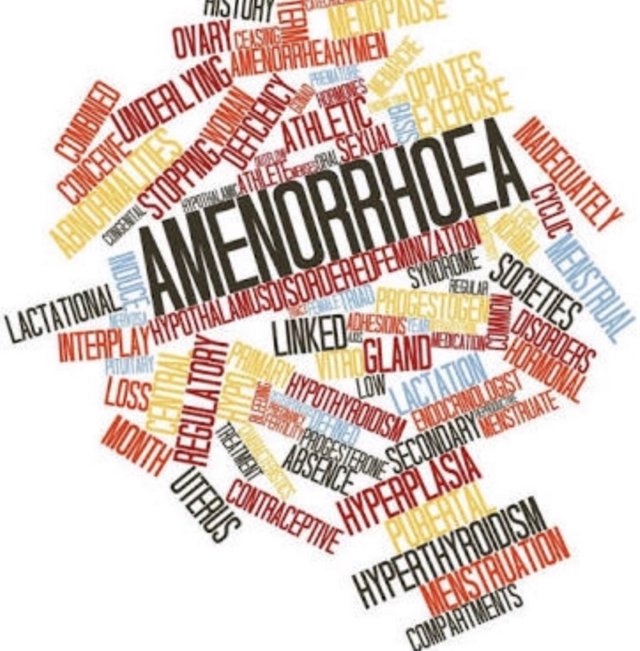Amenorrhea (patient education)
Amenorrhea is when a woman of childbearing age fails to menstruate. A woman normally menstruates every 23 to 35 days.

In this type of amenorrhea, menstruation does not commence at the time of puberty. In case a young teenager is developing normally but does not start her periods by 15 years of age, she is said to have primary amenorrhea.
It should also be noted that if signs of puberty are not visible at 13 years of age, medical advice needs to be sought. Primary amenorrhea is not so common.
Causes
Apart from pregnancy, a host of factors can lead to amenorrhea. These include the following:
Birth defects
Genetic Conditions
Uterine Infections
Surgeries and tumours
Hormones
Extreme weight loss
Breastfeeding
Menopause
Severe Stress
Overexercising
Hormonal disorders (thyroid/pituitary gland)
Chronic health conditions
Some medications
Gynaecological disorders
Symptoms
Amenorrhea can also be a consequence of a long-term illness, such as polycystic ovary syndrome, or premature ovarian failure. Hypothyroidism, in which the thyroid gland is underactive, can also cause it. A pituitary tumor may interfere with periods.
Depending on the cause of amenorrhea, other symptoms may occur. These include:
Milky nipple discharge
Hair loss
Headache
Vision changes
Excess facial hair
Pelvic pain
Acne
Risk factor
Factors that may increase your risk of amenorrhea may include:
Family history If other women in your family have experienced amenorrhea, you may have inherited a predisposition for the problem.
Eating disorders If you have an eating disorder, such as anorexia or bulimia, you are at higher risk of developing amenorrhea.
Athletic training Rigorous athletic training can increase your risk of amenorrhea.
Complications
Complications of amenorrhea may include:
Infertility-If you don’t ovulate and have menstrual periods, you can’t become pregnant.
Osteoporosis-If your amenorrhea is caused by low estrogen levels, you may also be at risk of osteoporosis – a weakening of your bones.
Explanation of types (patient education)
Amenorrhea (the absence of menstruation) can be primary or secondary.
Primary amenorrhea is failure of menses to occur by one of the following:
Age 16 or 2 yr after the onset of puberty
About age 14 in girls who have not gone through puberty (eg, growth spurt, development of secondary sexual characteristics)
If patients have had no menstrual periods by age 13 and have no signs of puberty (eg, any type of breast development), they should be evaluated for primary amenorrhea.
Secondary amenorrhea is cessation of menses after they have begun. Usually, patients should be evaluated for secondary amenorrhea if menses have been absent for ≥ 3 mo or ≥ 3 typical cycles because from menarche until perimenopause, a menstrual cycle lasting > 90 days is unusual.
Diagnosis
Primary amenorrhea can be diagnosed if a patient has normal secondary sexual characteristics but no menarche by 16 years of age. If a patient has no secondary sexual characteristics and no menarche, primary amenorrhea can be diagnosed as early as 14 years of age. Secondary amenorrhea is the absence of menses for three months in women with previously normal menstruation and for nine months in women with previous oligomenorrhea. Secondary amenorrhea is more common than primary amenorrhea.
Treatment
If the absent periods are caused by lifestyle factors, such as excessive exercise, a change of exercise plan or adjusting the diet may help to stabilize the monthly cycle. If emotional or mental stress is a problem, psychological therapy may help.
A woman who has experienced excessive weight loss may need a professionally supervised weight gain regime. Those with some type of eating disorder will be referred to a psychiatrist and a nutritionist or dietitian.
Women whose menstruation stops because of an underactive thyroid may receive treatment with thyroxine, a thyroid hormone. If a woman is overweight due to polycystic ovary syndrome, she may be advised to lose weight.
When to seek doctor
You should contact your doctor if:
You are 14 and have not started to develop breasts or pubic hair
You are 16 and have not had your first menstrual period
If you are sexually active, call your doctor if you miss a period. You will need to have a pregnancy test.
If you are not sexually active, see your doctor if:
You have missed three consecutive menstrual periods
Your periods are irregular
Dr. Shivani Bhardwaj